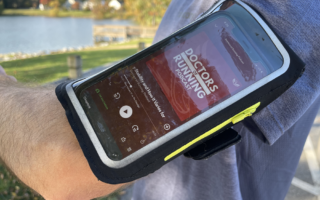I used a modified version of the 18 week/55-70 mile Pfitzinger marathon training plan for the first time to try and run my first sub-three-hour marathon at the 2023 Marine Corps Marathon. Spoiler alert: I didn’t achieve my goal, but it certainly wasn’t because of the training plan. I have the unseasonably warm weather to thank for that!
Simply put, I got in the best shape of my life because of the 18-week plan. I’ve been running for nearly two decades, and I never had more fun training for a marathon—or any race. I wouldn’t recommend the plan for everyone training for a marathon—especially first-time marathoners. For reference, this was my fifth marathon. Running six days a week challenged me more than expected. There were times when I felt a bit overwhelmed, but there are certainly many positives to the high frequency of running.
Weekly mileage
My weekly mileage total reached a peak of 67 miles in week 11. There were seven weeks in the 60’s, five weeks in the 50’s and the remaining six weeks in the 40’s. Before this plan, my highest weekly mileage sat in the mid-50s. The weeks with mid to high 60’s mileage totals were definitely tough but it was always manageable.
Speed work
I only started taking speed workouts seriously in 2022 when I’d do one tempo workout a week. So, it was quite surprising that I’d do two speed workouts in the same week. The training plan has lactate threshold workouts and strides, as well as VO2 max efforts and a few tune-up races in the second half of the plan. I had never done a VO2 max workout or strides before. Yet, despite the challenge, I found these workouts to be quite enjoyable. Not including strides, week 5 is the first with two true speed workouts (lactate threshold and marathon pace run).
Lactate thresholds: Range from 9-12 miles at 15K to half marathon race pace.
VO2 max workouts: Range from 8-11 miles at 5K race pace.
Strides: Strides are littered throughout the plan, with the majority consisting of 10 x 100m strides as part of runs of 6-9 miles.
Long runs
Similar to speed workouts, I only ever ran one long run a week in traditional marathon training. But the Pfitzinger marathon training plan isn’t traditional. The 18/55-70 plan calls for three speed workouts a week—two medium-long runs (11-15 miles) and a true long run (16-20 miles). I wasn’t willing to do all three each week, so I settled on one medium-long run and one long run. It was tough tackling two long runs, so I can’t imagine what three feels like. There were a couple instances when it was difficult to finish the 60+ mile week with an 18 or 20 miler.
Recovery
Only one rest day a week seems daunting, but it’s actually easier in some ways than running four or five days a week. By running 86% of the days in a week, you naturally develop a more consistent running routine. It becomes less a question of which days you’ll run, and instead, when you’ll take the one rest day during the week.
Strength training
Like many runners, I’m not thrilled about strength training but recognize its importance as part of successful marathon training and avoiding injury. Each week of the plan has a “cross training” day I use for a lower body workout. This workout consists of a 20-minute session with weighted squats, lunges, dumbbell deadlifts, squat jumps, and more. In addition, I did an upper body workout (push-ups, pull-ups, dips, and some dumbbell work) 3-4 times a week.
Conclusion
So will I use the Pfitzinger marathon training plan again? Definitely. In fact, I plan to use it for my spring 2024 marathon. I haven’t decided yet if I’ll commit to the full 18/55-70 plan next time or do another modified version. Despite the intensity of the plan and the struggle to find motivation some days, I feel it’s the right plan for me. I’m confident the plan will get me to where I want to go next year—across the marathon finish line before the clock reads 3:00:00, with a smile on my face.








